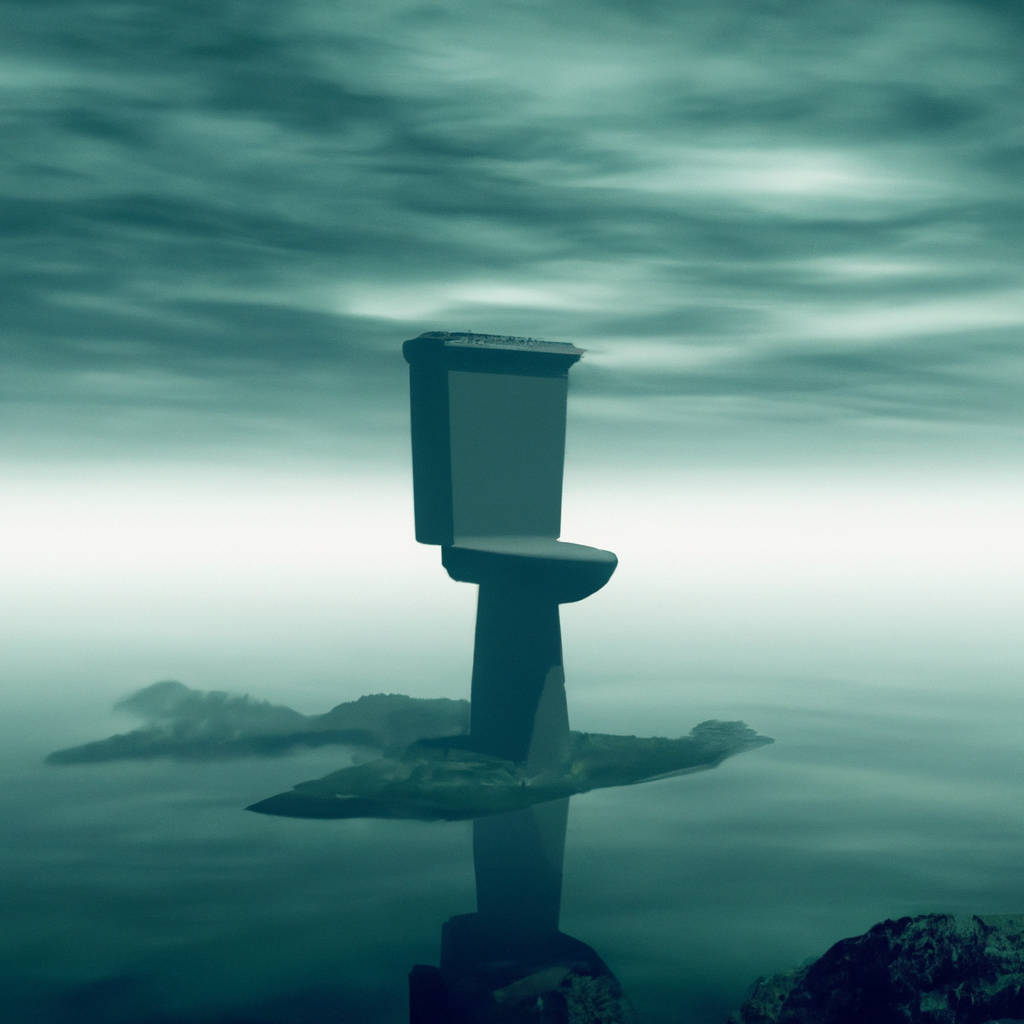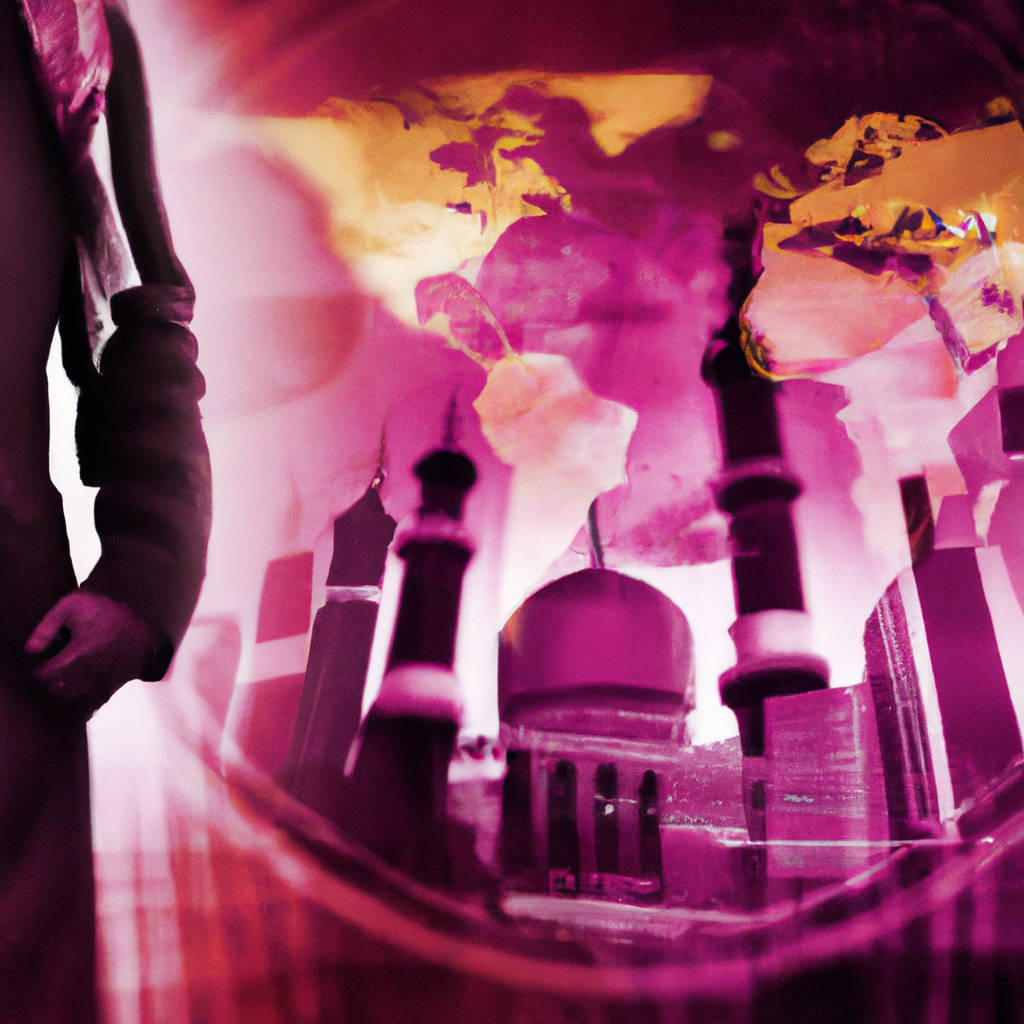Decoding the surreal horror of ‘Skibidi Toilet’ is a daunting task, as the music video is a bizarre and unsettling experience that defies traditional categorization. The video begins innocently enough, with a group of people dancing and singing in a brightly colored bathroom. However, as the song progresses, the tone shifts dramatically, with increasingly disturbing imagery and surreal visuals that leave viewers feeling unsettled and uneasy. The juxtaposition of the cheerful music and the eerie visuals creates a sense of cognitive dissonance that adds to the overall sense of unease.
The video’s use of surreal and abstract imagery, such as floating toilets and anthropomorphic toilets, adds to its unsettling nature, leaving viewers questioning what they are seeing and feeling a sense of dread. The video’s abrupt and jarring editing style only adds to the sense of disorientation, leaving viewers feeling as though they have been pulled into a nightmarish world that defies logic and reason. Overall, ‘Skibidi Toilet’ is a truly surreal and horrifying experience that leaves viewers questioning their own perception of reality and the boundaries of what is considered acceptable in the world of music videos.

Unraveling the Skibidi Phenomenon
The Skibidi phenomenon has taken the internet by storm, captivating audiences with its catchy tune and quirky dance moves. The viral dance challenge has spread like wildfire across social media platforms, with people from all walks of life joining in on the fun. The simplicity of the dance, with its repetitive arm-swinging motion, has made it accessible to people of all ages and backgrounds. Many have praised the Skibidi phenomenon for its ability to bring people together in a shared moment of joy and laughter.
However, some have raised concerns about the origins of the dance and its potential cultural appropriation. Despite these criticisms, the Skibidi phenomenon continues to gain momentum, with new variations and interpretations popping up daily. As the trend shows no signs of slowing down, it begs the question: what is it about the Skibidi phenomenon that has captured the hearts of so many? Perhaps it is the sheer silliness of the dance, or the sense of community that comes from participating in a global dance craze. Whatever the reason, one thing is certain: the Skibidi phenomenon has firmly cemented its place in internet culture, leaving a lasting impact on those who have taken part in the fun.
Analyzing Surreal Elements
Surrealism is a movement in art and literature that emerged in the early 20th century as a response to the rationalism and order of the previous era. Surrealist artists sought to unlock the unconscious mind and explore the world of dreams and fantasies. One of the key elements of surrealism is the use of unexpected juxtapositions and irrational imagery to create a sense of disorientation and surprise in the viewer.
By combining unrelated objects or placing them in unusual contexts, surrealists aimed to challenge conventional ways of thinking and push the boundaries of reality. Analyzing surreal elements involves looking beyond the surface of a work of art to uncover the hidden meanings and associations that lie beneath. It requires a willingness to suspend disbelief and embrace the illogical and fantastical aspects of the artwork. Through careful examination and interpretation, viewers can gain a deeper understanding of the artist’s intentions and the underlying themes of the work.
Surrealism invites us to question our assumptions about the world and consider new possibilities beyond the constraints of logic and reason. In this way, analyzing surreal elements can lead to a richer and more complex appreciation of the art and the ideas it conveys. Whether through the dream-like landscapes of Salvador Dali or the hauntingly strange figures of Rene Magritte, surrealism continues to captivate and challenge viewers with its enigmatic and thought-provoking imagery.
Horror Tropes in Unexpected Places
Horror tropes are a common element in many forms of entertainment, from movies and TV shows to books and video games. However, these tropes are often associated with specific genres, such as supernatural horror or slasher films. What is more unexpected is when horror tropes appear in unexpected places, such as romantic comedies or children’s cartoons. This juxtaposition of horror elements in typically light-hearted or innocent genres can create a sense of unease or discomfort for the audience, as they are not expecting to encounter such dark themes in these contexts.
One example of horror tropes in unexpected places is the use of jump scares in romantic comedies. Jump scares are a classic horror trope that relies on sudden loud noises or visuals to startle the audience. In a romantic comedy, these jump scares can be used to heighten tension or create a sense of unpredictability in a scene that is otherwise lighthearted and comedic. This unexpected shift in tone can catch the audience off guard and add an element of horror to an otherwise light-hearted film.
Another example of horror tropes in unexpected places is the use of creepy imagery in children’s cartoons. Children’s cartoons are typically meant to be fun and entertaining for young viewers, but some creators have incorporated elements of horror into their shows to create a sense of unease or tension. This can include creepy characters, eerie settings, or unsettling storylines that may be too dark or scary for young children. While these elements may be subtle or brief, they can still leave a lasting impression on viewers and add a layer of depth to the show.
Overall, the use of horror tropes in unexpected places can be a powerful tool for creators looking to subvert audience expectations or create a sense of unease. By blending elements of horror with genres that are typically associated with lighter themes, creators can create a unique and memorable viewing experience that challenges traditional storytelling conventions.
Cultural Context and Reception
Cultural context plays a significant role in shaping the reception of various forms of art and media. The cultural background of an individual can heavily influence how they perceive and interpret a piece of work, whether it be a painting, a film, or a piece of music. Different cultures may have different values, beliefs, and traditions that impact how they view and understand creative expressions. For example, a painting that is highly regarded in one culture may be seen as controversial or offensive in another. Additionally, the historical context in which a piece of art was created can also impact its reception. Understanding the cultural context of a work can provide valuable insight into the intentions of the artist and the messages they are trying to convey.
Reception, or how a piece of art is received by the audience, is also influenced by factors such as social norms, political climate, and personal experiences. For example, a film that addresses a sensitive political issue may be received differently depending on the political beliefs of the viewer. Similarly, a song that resonates with one person’s personal experiences may not have the same impact on someone from a different background. The way in which a piece of art is received can vary widely, and can be shaped by a multitude of factors beyond just the content of the work itself.
Overall, cultural context and reception are interconnected aspects that play a crucial role in how art and media are perceived and understood. By considering the cultural background of both the artist and the audience, we can gain a deeper appreciation for the complexities of creative expression and the diverse ways in which it can be interpreted. Ultimately, understanding these factors can lead to more meaningful and enriching experiences with art and media.
Impact on the Genre
The impact of certain actions on a genre can be profound, shaping the way artists and audiences interact with the music. When artists push the boundaries of a genre, they can open up new possibilities for innovation and creativity. This can lead to the evolution of the genre as a whole, as new sounds and techniques are introduced. On the other hand, certain actions can also have a negative impact on a genre, stifling innovation and creativity.
For example, if artists begin to rely too heavily on trends and formulas, the genre can become stagnant and lose its relevance. Similarly, if artists engage in unethical behavior or controversial actions, it can tarnish the reputation of the genre as a whole. Ultimately, the impact of actions on a genre depends on the context in which they occur and the way in which they are received by the music community. By considering the potential impact of their actions on the genre, artists can make more informed decisions about the direction of their music and the legacy they leave behind.